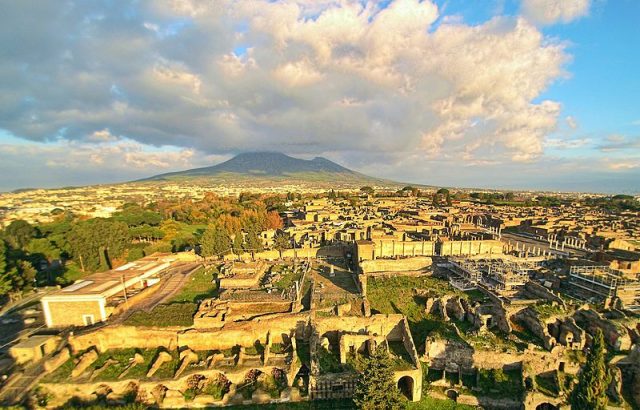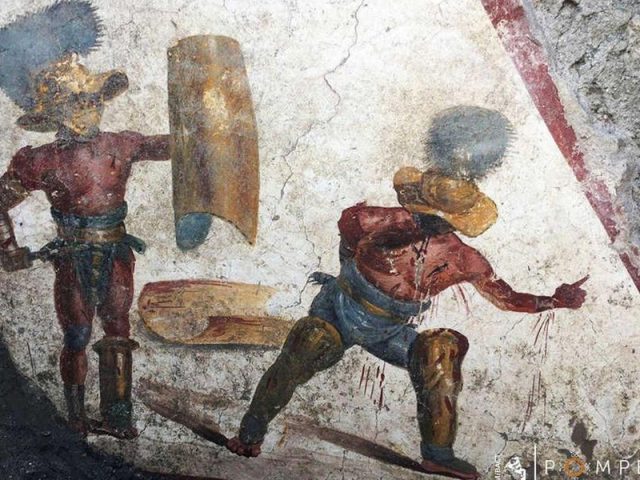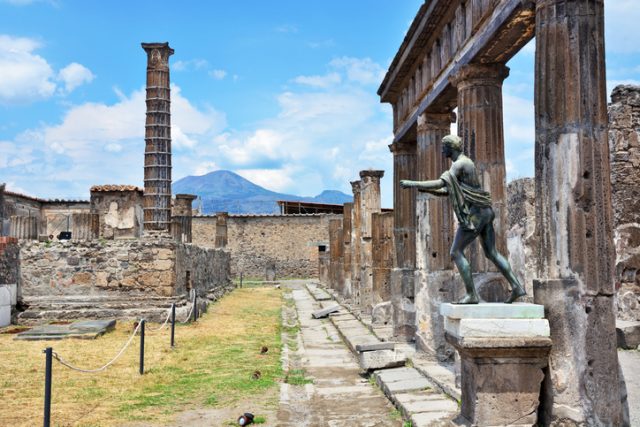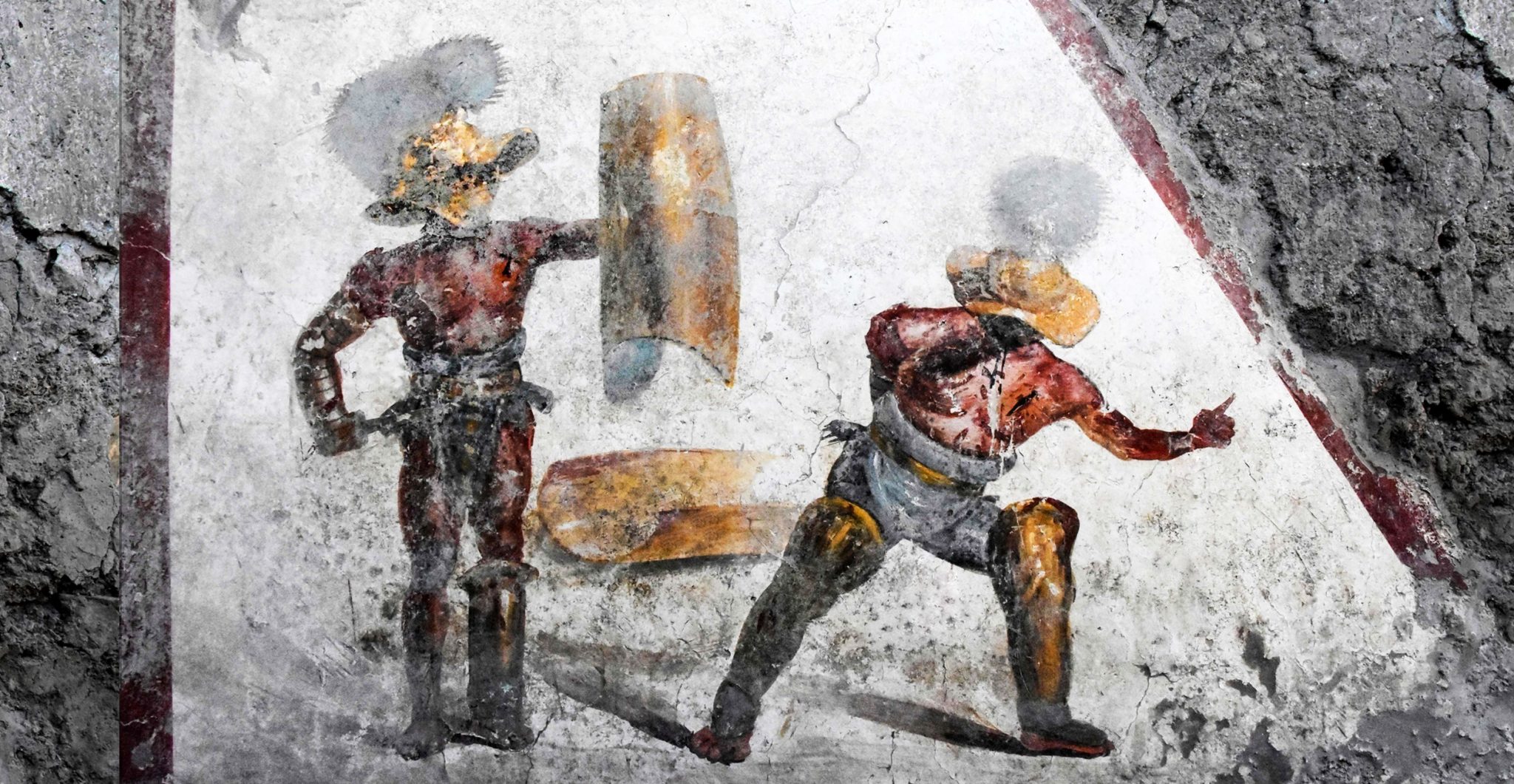A gladiator fresco has been discovered at the Pompeii archaeological site which is a bit too realistic for comfort. In the year 79 AD, Mount Vesuvius erupted and the ensuing mountain of superheated ash that fell buried the Roman city of Pompeii, doing away with most of its inhabitants instantly as they went about their daily lives.
Now, Pompeii is a highly-favored spot for archaeological exploration both because of the richness of the information that’s available and for the preservation of the site. The city covers a pretty large area, and there are often excavations going on in one part of it or another.

According to a report in the Guardian, the most recent find in that ancient city is a fresco which shows a somewhat graphic scene of two gladiators. The fresco seems to show the end of the fight between a Thracian and a Murmillo (different types of gladiators). One has clearly been defeated, and the other appears to be waiting for the word on whether or not to administer the final blow.
The art was found on a wall under a set of stairs in what is believed to be a tavern which catered to gladiators with an area for socializing and drinking down below, and accommodations for more intimate services upstairs. The building is located in the Regio V part of the city, which also holds a gladiator barracks, and there was also ancient graffiti found which reinforces that assessment.
The gladiator fresco is rather graphic, showing pretty realistic wounds on the defeated fighter’s chest and wrist, as he yields near his fallen shield. He’s holding up one thumb in a gesture that asks for grace.

The ruined city of Pompeii is currently and archaeological park, with sections open to tourists. Regio V is a 54-acre area located in a part of the park that the public doesn’t currently have access to. According to smithosonian.com, the fresco is just one of many finds that have been in that part of the city’s excavations.

“The Great Pompeii Project” is a $140 million conservation and restoration program that started in 2012. Most of the funding for the project has come from the EU, and it has been bearing tremendous fruit. People working the project have uncovered a veritable gold mine of artifacts, ranging from skeletons and objects of daily life to graffiti and a collection of charms that has been called a sorceress’s kit.
Some of the best finds, though, have been the frescoes. A fresco is a watercolor picture that has been quickly painted onto wet plaster, usually on a wall or ceiling. Besides the image of the two gladiators, other frescoes have also been found.
They uncovered a place that is essentially a Roman fast food counter, called a thermopolium which had a fresco of a sea nymph riding a horse over the water, and other which seemed to be depictions of the shop’s business, which may have been the equivalent of signage. Another find was a somewhat provocative depiction of the myth of Leda and the Swan. Yet another find was a depiction of Narcissus, gazing at his own reflection in a pond.
The current state of the site is a major improvement over its condition in years past, with its carefully maintained and very methodical work. The Italian Minister of Culture, Dario Franceschini noted that a decade ago Pompeii had a poor reputation around Europe, as the site had struggles with strikes, with long lines of tourists left standing in the sun, and even collapses.
(PHOTOS) Frozen in Time: The Citizens of Pompeii Fossilized by Volcanic Ash
Because of all the problems the park was having, UNESCO threatened to revoke its place on the list of world heritage sites. Since then, the park has undergone significant improvements and has started attracting more than four million tourists a year.
The funding for the Great Pompeii Project has helped facilitate that, as well as making it possible for archaeologists to resume making regular and methodical new excavations to see what other historical gems the ancient city might yield.
